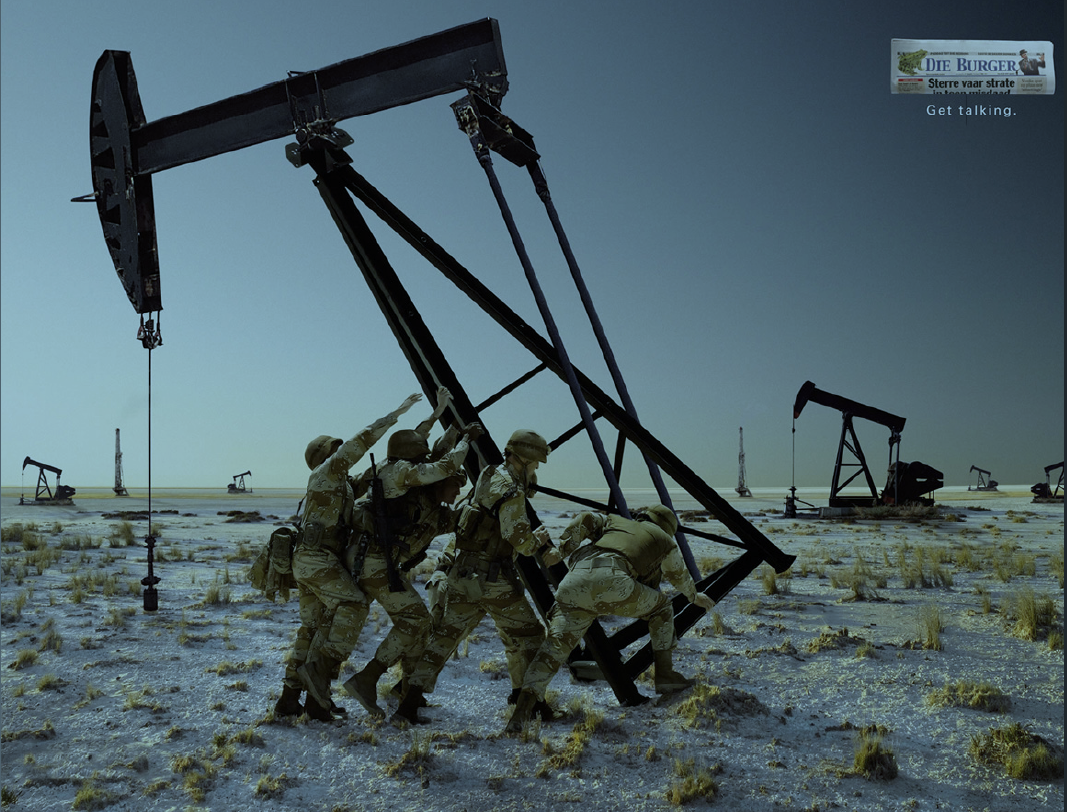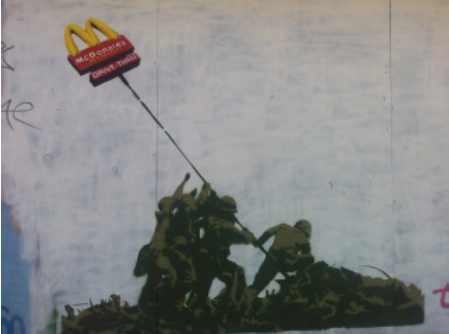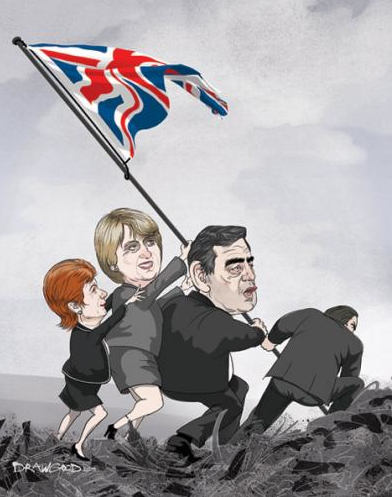We have written here at NCN on numerous occasions about Joe Rosenthal’s iconic “Raising Old Glory on Mt. Suribachi” (here, here, here, here, here, and here). While there is much to be said about the photograph our basic approach has been to call attention to how it operates as an eloquent inventional resource (by some accounts, a national treasure) for performing civic identity. The power of the photograph, we maintain, is in large measure its aesthetic capacity to transcribe three related but nevertheless different (and sometimes competing) commitments to egalitarianism, nationalism, and civic republicanism. This transcription animates an expansive public emotionality that opens the image to to a wide array of interpretations and subsequent appropriations or usages that range from reverential civic piety to a deeply seeded public cynicism.
A month doesn’t go by that we don’t encounter new appropriations of the photograph (and we are much indebted to the many readers who direct our attention to them), and interestingly enough, increasingly many of these appropriations come from sources outside of the U.S. Sometimes such appropriations seem to be reflecting directly on U.S. foreign policy (as with the first two images below), but in other instances the appropriation seems to speak to a more transcendent meaning that the image invokes as it appears to have little or no connection to the location of the photograph in the symbolic economy of U.S. public culture(as in the last image). We are not entirely sure what to make out of all of this just yet and we will return to the subject of the global appropriation of U.S. iconcic photographs in a subsequent post. But for now we leave you with three of the most interesting recent appropriations of the Iwo Jima icon and invite your reflections.
Die Burger: Iwo Jima (FCB Advertising Agency, Cape Town, South Africa)
Raising the Flag at Museumplein (Stedelijk Museum, Amsterdam)
Raising the Flag in the U.K.
Photo Credits: Chad Henning, Zoran Koracevic, drawgood



The first two images are the most obvious, though the first is, I think, the most powerful. A direct relation with Iraq is obvious. The final one, of the UK Prime Minister and other cabinet members is more obtuse – and I am English (currently living in Australia). A recourse to nationalism, perhaps (the saving grace of of many a fool and criminal)… I don’t actually think it is this, it was just the first thing that came to mind. Where is the image from? Which newspaper?
Anyway, a stimulating collection of images.
Dunno if you know of it but there was uproar in Australia recently about the use of the Iwo Jima image in an ad for Tourism Australia. Read here: http://www.goldcoast.com.au/article/2009/04/13/68681_gold-coast-top-story.html.
Downright sacrilegious!
Sometimes such appropriations seem to be reflecting directly on U.S. foreign policy, but in other instances the appropriation seems to speak to a more transcendent meaning that the image invokes as it appears to have little or no connection to the location of the photograph in the symbolic economy of U.S. public culture. We are not entirely sure what to make out of all of this…
the post-modern American story is “No Old Glory”.
It is obvious that the First image of the Iraq Troops is the most powerful, My question that I would like to ask the Publisher, was it staged? It is also a piece of photography that has been manipulated multiple times and through out the world, and widely made fun of. Like the Parody of the other 2 images where it looks like Photoshop or some form of cut and paste was used to symbol saving McDonalds. Making fun of original art and Pieces is what I’m finding out to become more and more widely excepted and used throughout todays society. The U.K. image has taken me by surprise since I’m and American and poking fun at something that was so Influential in American Culture isn’t more or less widely Excepted.